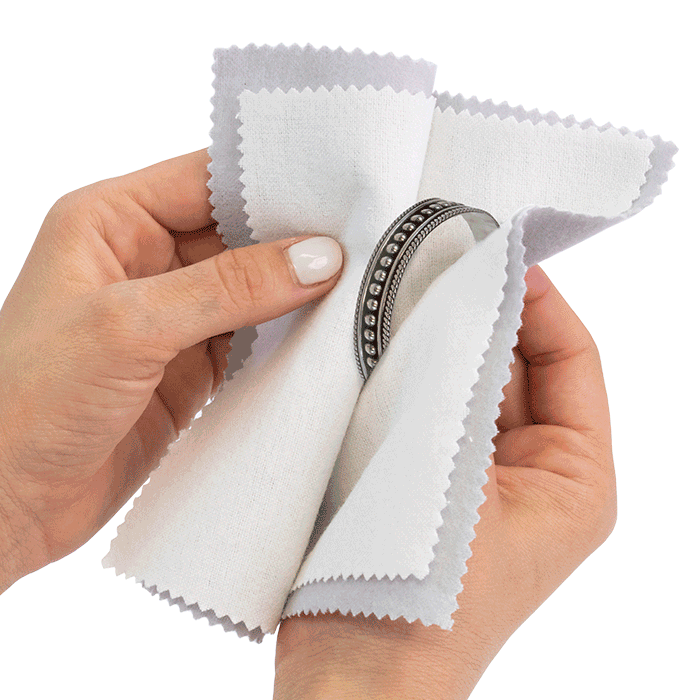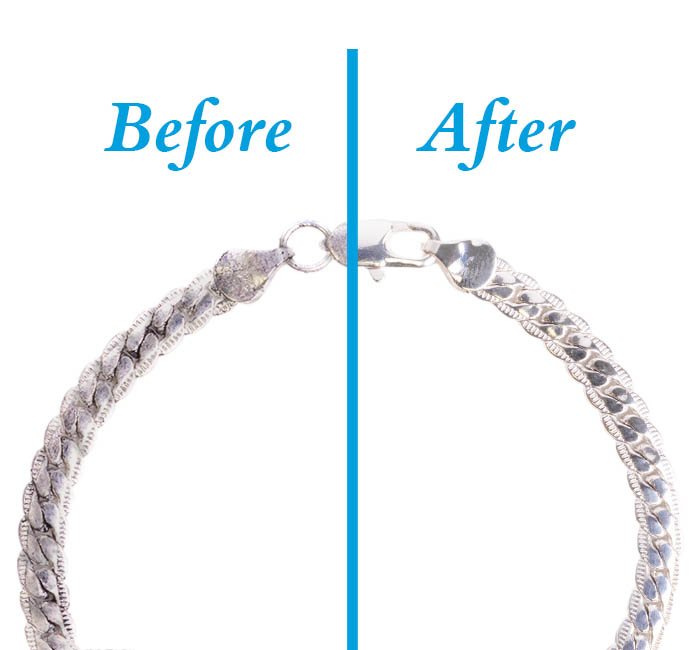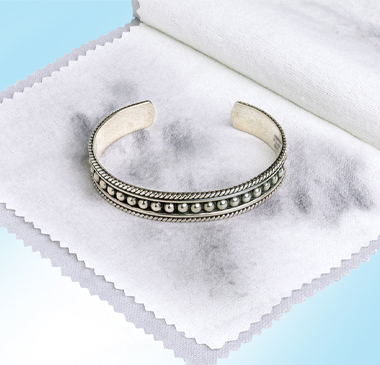
Smart Shine Tips: Three Tips to Make Jewelry Cleaner Your Favorite Add-On Sale
March 4, 2021
Smart Shine Tips: Three Phrases That Sell More Jewelry Cleaner
June 14, 2021As a jeweler, you are more than familiar with tarnish. But your customers may not know what to make of the blackish gray haze that seemingly covers their favorite silver jewelry overnight. So, they’ll look to you for help in removing the threat to their jewelry’s shine.
Unfortunately, many people see the discoloration and immediately think they need to clean it. When this doesn’t work, they may become frustrated as to why cleaning hasn’t worked and what they can do to get the metal shining again.
Here are some quick Q&A’s you can share with your customers to help them understand all things tarnish.
Customer Question: What is tarnish?
Your Answer: Tarnish is not dirt. It is a thin layer of corrosion that forms on a metal when it undergoes a chemical reaction with a non-metal compound, usually oxygen or sulfur dioxide gases. The surface of the metal undergoes a chemical change, the result of which discolors the metal.

The treated inner cloth of the Private-Label Polishing Cloth removes tarnish
Customer Question: Does cleaning remove tarnish?
Your Answer: No, it does not. Because the discoloration is not the result of dirt or something that can be washed off the surface using a cleanser, cleaning will not remove tarnish.
Customer Question: Then, how can I remove tarnish?
Your Answer: To remove tarnish, you need to use a product designed for the purpose. In this case, a professional silver cleaning formula that is designed to remove tarnish from jewelry. Suggest a mild formulation that does not risk pitting the piece, which can happen with harsher products. A good expert tip, tell them, is to use this product somewhat frequently. This will help prevent a build-up of tarnish, which becomes harder to remove over time.
Do note: Silver cleaning formulas that remove tarnish are not safe for gemstones, so do not use them on silver jewelry set with stones.
For pieces with a light amount of tarnish, the customer could also choose a Professional Polishing Cloth with a chemically treated inner cloth. These can be used to rub away tarnish as well as polish to a shine (using the outer cloth).

Customer Question: Can I use DIY tarnish removal methods?
Your Answer: Google is full of DIY ideas for tarnish removal. Some are straight out of your high school chemistry days, and might sound pretty cool. But while the chemical reaction may indeed work, using boiling water on our beloved jewelry can definitely cause damage. In this case, suggest the use of a professional silver cleaning formula for a much safer and easier (and probably a more affordable) bet.
Customer Question: How can I prevent tarnish?
Your Answer: For jewelry, the very best way to prevent tarnish is to wear the piece frequently. The natural oils on your skin help prevent the chemical reaction that causes tarnish. A win-win!
For jewelry they do not wear often, the key to tarnish prevention is proper storage. If the piece sits out in a dish, it will be exposed to the air and will tarnish. So, they need to store it in an air-tight container, such as a jewelry pouch or jewelry box (even a Ziplock bag will work). Suggest they consider adding an anti-tarnish strip treated with a tarnish preventing chemical, usually copper-based polymers that neutralize the tarnish-causing gases, to their jewelry storage box. Finally, remind them to not store their jewelry in paper, cardboard or cotton-filled boxes, as they can contain sulfur which contributes to the chemical reaction that causes tarnish.
And always remind customers, when you properly care for your silver jewelry, you minimize tarnish and maximize its beauty.





